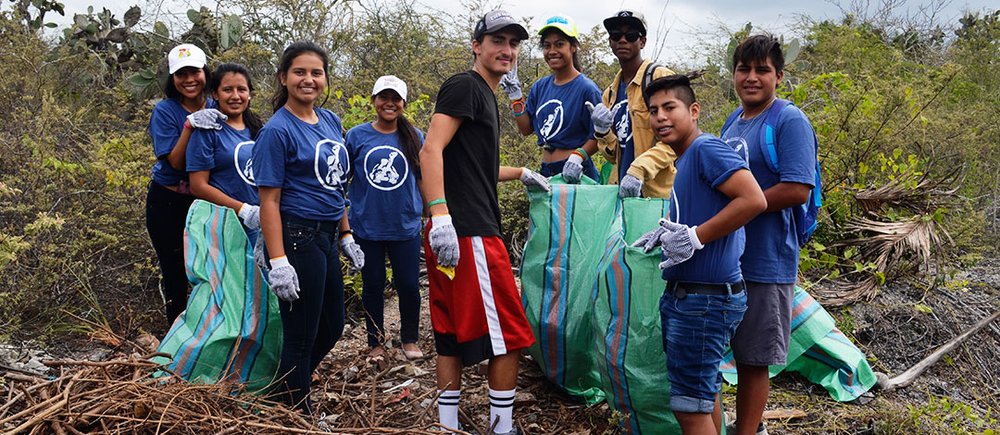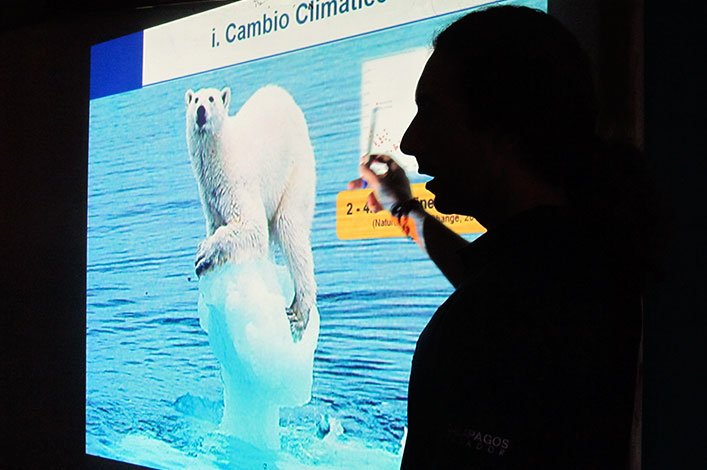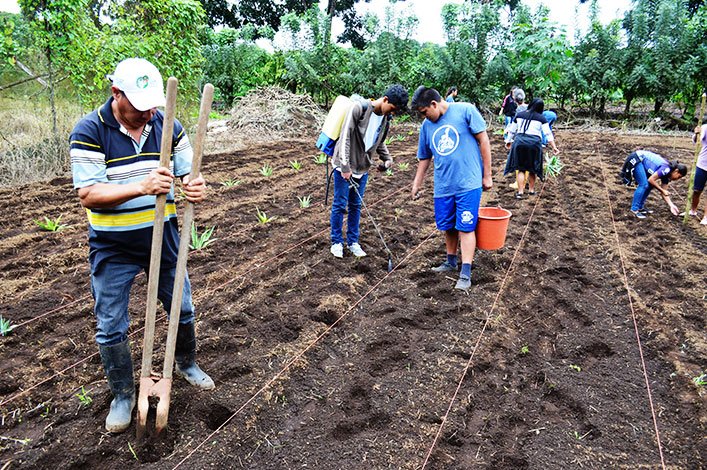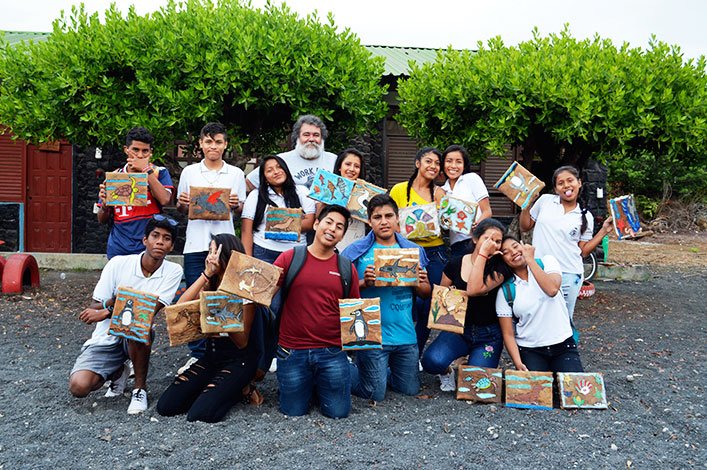
On Isabela Island in the Galapagos, the need to implement environmental education initiatives was identified as a high priority due to the lack of these types of initiatives in the curriculums of the educational centers. This article describes the story and results of the first environmental education project led by our Liaison Coordinator in Isabela after the CDF resumed institutional presence on this island in 2017.
The idea was born from a meeting with a group of friends. I had been representing the Charles Darwin Foundation on Isabela for a year and I wanted to start implementing social and/or environmental projects that had positives impacts on the community. One week ago, I had received a call to participate in the Leadership, Development and Community (LIDEC) funds managed by the Scalesia foundation. This was an excellent opportunity to try to propose and establish a concrete project. At that meeting there was a surf teacher, a yoga teacher, and a project coordinator who were willing to commit to initiatives that supported the community. We discussed the idea of proposing an environmental education project with a comprehensive approach related to different practical activities connected to environmental issues.

In Isabela there are different private and public institutions and NGO´s that carry out artistic, productive, and other activities related to the environment. We met each of them to know their interest in participating with the initiative. At the conclusion of these meetings the project proposal "Sustainable Community" was prepared, with the general objective to empower young people of Isabela to take action on environmental issues in the world and in Galapagos to motivate them to be agents of change within the community.
The project consisted of the implementation of a series of activities grouped into modules which were executed with the support of the local institutions interested in participating. Each institution was assigned a module according to its specialty. These modules were: plastic arts, theater, urban cleaning, sustainable agriculture and yoga, surf and paddle board. The idea was for the participants to receive theoretical classes in each of these modules, to learn how these activities were related to the environment and consequently to generate connections with the importance of taking care of nature and carrying out sustainable activities in the Galapagos.

The project was one of the winners of the call contest. Afterwards permission was requested to the Education District of Galapagos (Ministry of Education) for the project execution. The District responded by inviting the project to become part of the Student Participation Program of the Stella Maris Fiscomisional Education Center (CEFSM). This meant that the District placed greater importance on the project by requesting that it change its voluntary nature to officially form part of the school's projects. Adjustments were made and we worked with a group of 14 teenagers from the first year of bachelor studies.
“This Project has enriched the integral formation of its participants through practice and experience in their real and natural environment" - Mg. Mayra Flores, Rector CEFSM
A total of 40 activities were carried out which had the following tangible results: 28 frames created from natural supplies in which landscapes and animals of Galapagos were painted, the sowing of different organic vegetables in open and closed systems (greenhouses), the participation in two urban cleanings where 1,160 Kg of waste was collected, the execution of a surfing competition and a theatrical performance called “Rightbirth,” and the participation in an “Open House” were the participants shared their experiences and lessons with the community.

The tangible results show that the planned activities were fulfilled. This, coupled with the acquired knowledge during the project, high degree of participation, and the preparation of the participants in the “Open House,” indicate that the project achieved its general objective. In addition, other unexpected results have been identified that show that there was a greater impact on the community than expected.
One unexpected result was the voluntary participation of several members of the community in the executed activities. They worked as photographers, instructors, support staff and even as judges in the competitions. Another unexpected result was the desire shown by the involved institutions and participants to continue carrying out joint activities that can benefit the community, as well as their interest in replicating the project.

What is stated in the previous paragraph shows there are members of the community who are motivated and interested in continuing these new activities. This is very important because they can serve as an initial group to motivate more people, to transmit the messages acquired in the activities on a larger scale, and act as seeds which will grow into change on the island. Sustainable Community has been a very rewarding experience, as learning is always mutual and I hope we can continue to contribute in some way to the sustainability of Isabela and Galapagos ... maybe it's time to have a new meeting between friends ....
“In Isabela not many environmental talks are carried out. Through this project we not only receive these kinds of talks but also participate in many activities. This taught us to live and to feel what is happening in our surroundings; we have seen things from a different perspective” – Leida Quintero, Project Participant
More information about our projects in Galapagos.
Apply to our volunteer program.





